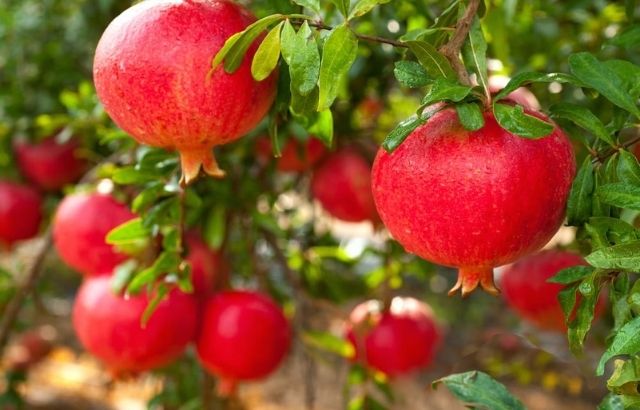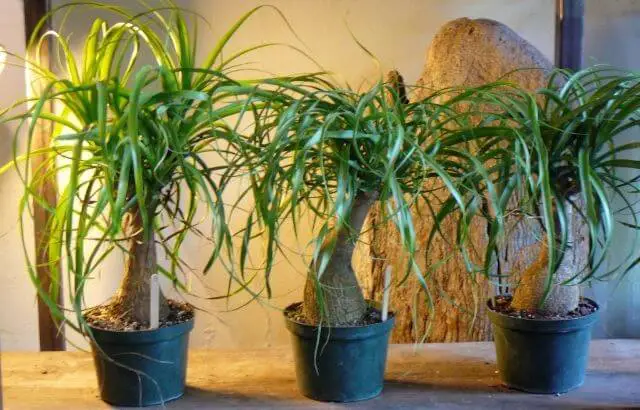Johnson grass is a common weed that plagues many yards and can be difficult to eliminate. It grows quickly and prolifically, and its roots can be pesky to dig out.
While it’s tempting to try to mow it down and hope for the best, this is an ineffective way of dealing with Johnson grass.
The good news is that you can take action to remove Johnson grass from your property in several ways. This Home Affluence post will explore the various methods available to remove Johnson grass from your lawn:
- Identify Johnson Grass
- Determine the extent of the infestation
- Make sure to wear protective clothing when handling Johnson Grass
- Preparing Your Lawn for Johnson Grass Control
- Try chemical control
- Utilize mechanical control
- Cut Johnson Grass near the root
- Implement cultural control
- Use an herbicide to kill Johnson Grass
- Apply post-emergent herbicides
- Reapply post-emergent herbicides
- Dispose of Johnson Grass properly
- Replant the area with a more desirable grass
- Monitor the area to make sure Johnson Grass does not return
- Take preventive measures to avoid Johnson Grass in the future
We’ll discuss the most effective solutions on the market and organic and natural options. Lastly, we’ll provide some tips on how to prevent Johnson Grass from making a return.
Learn how to banish Johnson grass from your yard for good effect.
How To Get Rid of Johnson Grass
1. Identify Johnson Grass
The first step in getting rid of Johnson Grass is accurately identifying it. It can do by looking for the plant’s distinguishing features.

Johnson Grass has a white band at the base of its leaf blade and a distinctive seed head. The leaf blade can be either smooth or rough and is usually between 3 to 6 inches long.
The seed head is a large panicle, usually up to 10 inches long. Knowing how to identify Johnson Grass is critical for successful control and eradication.
2. Determine the extent of the infestation
The second step in effectively getting rid of Johnson grass is determining the extent of the infestation. Johnson grass is a hardy, invasive plant that spreads quickly and can take over an area quickly.
It is important to understand the scope of the infestation to plan the most effective and efficient elimination strategy.

Identifying the infestation boundaries and size will help you choose the right tools, treatment methods, and timeline for removing Johnson grass.
3. Make sure to wear protective clothing when handling Johnson Grass
When handling Johnson Grass, wearing protective clothing such as long pants, long sleeve shirts, and gloves is important.
It is especially important when using chemical herbicides to prevent contact with the skin or eyes.

Additionally, wearing a face mask and eye protection can help reduce the risk of breathing in any fumes produced using chemical herbicides.
Furthermore, wearing a hat will help protect the head and face from potential contact with the Johnson Grass. Taking the necessary precautions when handling Johnson Grass is essential to ensure safety.
4. Preparing Your Lawn for Johnson Grass Control
Preparing your lawn for Johnson grass control is important in removing this pesky grass.
Begin by mowing the lawn close to the ground. It will make it easier to spot the Johnson grass and apply the necessary treatments.

Next, water deeply and evenly will help the treatments penetrate the soil and reach the root system.
Finally, remove any debris or weeds harboring Johnson grass from the lawn.
By taking these precautionary steps, you can help ensure the success of your Johnson grass control efforts.
5. Try chemical control
Chemical control is one of the most popular methods to eliminate Johnson grass.
Chemical control may be your best option if you’re looking for a fast and effective way to eliminate Johnson grass. Before using any chemical herbicides, read the product label and follow the instructions carefully.

It is also important to apply the products on a calm, sunny day and to avoid spraying in areas where runoff could occur.
6. Utilize mechanical control
Mechanical control is one of the most effective methods for removing Johnson grass. It involves physically removing the area’s grass, roots, and all.
To do this, use a shovel to dig up the grass and remove any remaining roots. A trowel or hoe may be necessary to loosen the soil before digging. Once removed, the Johnson grass should grow back in different spots.

However, it is important to completely remove the roots to ensure the effective elimination of the weed.
7. Cut Johnson Grass near the root
Cutting Johnson grass near the root removes this aggressive weed from your lawn or garden.
To do this, use a spade or shovel to dig up the entire plant and cut it at least 3 inches below the soil surface.

It will help ensure that the plant does not regenerate. It is important to wear protective gloves and clothing when digging and cutting Johnson grass, as the foliage can irritate the skin.
8. Implement cultural control
Cultural control can be a useful tool for removing Johnson’s grass. Cultural controls involve manipulating the environment to reduce the presence of Johnson grass.
It can do by removing it manually or by preventing its spread through mowing or burning.
You can also cover the area with mulch or black plastic to create a physical barrier preventing the plant from growing.

Additionally, you can use the proper fertilizers and reduce the presence of weeds to create an environment where Johnson grass cannot flourish.
Cultural control may require effort, but eliminating Johnson grass is effective.
9. Use an herbicide to kill Johnson Grass
The ninth step in removing Johnson Grass from your lawn is an herbicide. Herbicides are effective in killing Johnson Grass and other weeds.
When using any herbicide, it is important to carefully read and follow the product label instructions to ensure safe and effective use.

It would help to take appropriate protective measures to avoid contact with the herbicide and apply it when there is little to no wind to reduce the risk of spray drift.
After application, it will take several days to see the effects of the herbicide on the Johnson Grass.
10. Apply post-emergent herbicides
Post-emergent herbicides are applied to actively growing Johnson grass and are meant to kill the weed while leaving the surrounding plants alive.

Products containing glyphosate, such as Roundup, are effective post-emergent herbicides.
It is important to carefully read and follow the instructions on the product label when using herbicide. For best results, apply the post-emergent herbicide late in the season, after flowering.
It will help to prevent Johnson grass from re-sprouting and to spread.
11. Reapply post-emergent herbicides
Post-emergent herbicides can be an effective method to get rid of Johnson grass.
These herbicides should be applied carefully and cautiously as they can also affect desirable plants.

Before ensuring the most effective application, it is recommended that the herbicide is applied at the optimal time of year and when the Johnson grass is most actively growing.
Additionally, multiple applications may be necessary to eradicate this weed.
For best results, following the directions on the herbicide label and using appropriate protective equipment when applying these products is important.
With careful application, post-emergent herbicides can be an effective way to get rid of Johnson grass.
12. Dispose of Johnson Grass properly
It is important to dispose of Johnson Grass to get rid of it properly.
Johnson Grass is an invasive weed species, so it is important not to disperse the seeds or allow them to spread to other areas.
The best way to dispose of Johnson Grass is by digging it up and removing the entire root system.

It is also important to dispose of the removed Johnson Grass in the trash, not on the ground.
To ensure the weed is completely eradicated, the area should monitor for re-growth, and additional measures should be taken if necessary.
Additionally, proper disposal of Johnson Grass can help reduce the spread of the weed and limit the damage it causes to crops and other plants.
13. Replant the area with a more desirable grass
Replanting an area with a more desirable grass to get rid of Johnson grass can be challenging, but with proper planning and execution, the results can be rewarding.
Before beginning, assessing the soil quality in the affected area and any existing weeds is important to determine the best course of action.

After choosing the appropriate grass variety, the area should be prepped by removing old vegetation, tilling the soil, and amending it with nutrients.
Once the soil is ready, grass seed should be spread and lightly covered with soil, followed by adequate watering. It is also important to account for any existing or potential pests in the area and provide appropriate treatments as needed.
With proper maintenance, the newly established grass should provide a healthier, more attractive lawn in no time.
14. Monitor the area to make sure Johnson Grass does not return
Monitoring the area for Johnson Grass is vital to getting rid of it.
Before ensuring that Johnson Grass does not return, inspecting the area for signs of new growth at least twice a year is important.

During the inspection, look for signs of Johnson Grass, such as seed heads and growth patterns, that can indicate the presence of the weed.
If any Johnson Grass is detected, it should be removed immediately to prevent further spread.
Additionally, it is a good practice to prevent Johnson Grass from returning, such as using Johnson Grass-resistant plants and avoiding over-fertilizing the soil.
Regular monitoring and diligent care can prevent Johnson Grass from returning and clear the area of this troublesome weed.
15. Take preventive measures to avoid Johnson Grass in the future
Before preventing Johnson grass from becoming a bigger problem, it is essential to take preventive measures:

- Identifying the infested area and removing the existing Johnson grass as soon as possible is important. You can use a weeding tool such as a hoe or a shovel to pull weeds out of the ground.
- Monitoring the area to ensure the weed does not return is important. You can also spray the area with an herbicide or use a pre-emergent herbicide to prevent Johnson grass from growing back.
- You can plant a ground cover such as clover or grass to help keep Johnson grass from gaining a foothold in the area.
These steps can help protect your land from this invasive weed and ensure Johnson grass does not take over your property.
Expert Opinion
In conclusion, Johnson grass can be difficult to control, but with some persistence and the help of the right tools and techniques, it can do.
The best way to get rid of Johnson grass is to prevent it from spreading in the first place with mulch, proper mowing, and avoiding overwatering.
If you already have Johnson grass in your yard, you may need to use a combination of hand-pulling, herbicides, and reseeding to control it effectively.
With the right approach, you can eliminate Johnson grass and keep your lawn looking its best.
The combination of mowing, hand-pulling, herbicides, and mulching can help you eliminate Johnson grass and keep it away. With patience and a comprehensive approach, you can enjoy a grass-free lawn again.




